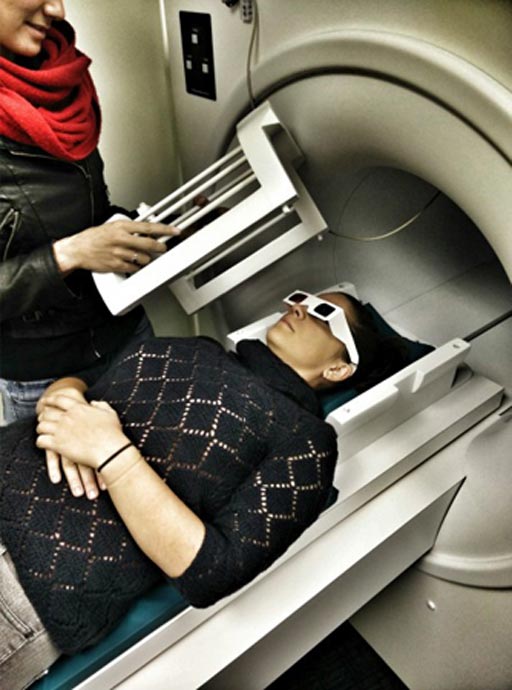Research Reveals How Brains See the World in 3D
By MedImaging International staff writers
Posted on 05 Apr 2017
Researchers have discovered how the brain can represent 3D information, even though the human retina can only record information in 2D.Posted on 05 Apr 2017
The volunteers who took part in the study were asked to view simple images, while wearing 3D glasses, in a functional Magnetic Resonance Imaging (fMRI) scanner. The researchers hoped this would allow them to demonstrate how different parts of the brain represent an object’s location in 3D.

Image: A researcher entering the fMRI scanner wearing 3D glasses (Photo courtesy of Ohio State University).
The researchers from the Ohio State University published the results of the study in the February 15, 2017, issue of the journal NeuroImage. The results showed that when an image initially enters the visual cortex, the brain mainly codes the 2D location, but as processing continues, the brain also decodes the depth information. This is the first study that directly compares 2D and depth information at the same time to show how 3D representations (2D plus depth) are formed, and interact in the brain.
The researchers plan to focus future studies on quantification and modeling of the nature of 3D visual representations in the brain.
Senior author of the study, assistant professor of psychology at the Ohio State University, Julie Golomb, said, “As we move to later and later visual areas, the representations care more and more about depth in addition to 2D location. It’s as if the representations are being gradually inflated from flat to 3D. The results are surprising because a lot of people assumed we might find depth information in early visual areas. What we found is that even though there might be individual neurons that have some depth information, they don’t seem to be organized into any map or pattern for 3D space perception.”














